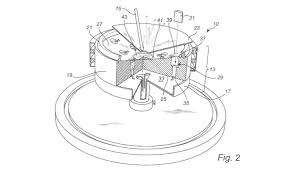
Breaking News
 Wash Post Editorial Board Turns Against Climate Agenda?!
Wash Post Editorial Board Turns Against Climate Agenda?!
 One Year Ago I Predicted and Described in Detail Huge Mars AI Plans that Elon Musk Confirmed...
One Year Ago I Predicted and Described in Detail Huge Mars AI Plans that Elon Musk Confirmed...
 British Teachers To "Spot Misogyny" In Boys And Target Them For Reeducation
British Teachers To "Spot Misogyny" In Boys And Target Them For Reeducation
 Democrats Refuse To Release Post-Mortem Of 2024 Election Loss, DNC Chair Says
Democrats Refuse To Release Post-Mortem Of 2024 Election Loss, DNC Chair Says
Top Tech News
 This tiny dev board is packed with features for ambitious makers
This tiny dev board is packed with features for ambitious makers
 Scientists Discover Gel to Regrow Tooth Enamel
Scientists Discover Gel to Regrow Tooth Enamel
 Vitamin C and Dandelion Root Killing Cancer Cells -- as Former CDC Director Calls for COVID-19...
Vitamin C and Dandelion Root Killing Cancer Cells -- as Former CDC Director Calls for COVID-19...
 Galactic Brain: US firm plans space-based data centers, power grid to challenge China
Galactic Brain: US firm plans space-based data centers, power grid to challenge China
 A microbial cleanup for glyphosate just earned a patent. Here's why that matters
A microbial cleanup for glyphosate just earned a patent. Here's why that matters
 Japan Breaks Internet Speed Record with 5 Million Times Faster Data Transfer
Japan Breaks Internet Speed Record with 5 Million Times Faster Data Transfer
 Advanced Propulsion Resources Part 1 of 2
Advanced Propulsion Resources Part 1 of 2
 PulsarFusion a forward-thinking UK aerospace company, is pushing the boundaries of space travel...
PulsarFusion a forward-thinking UK aerospace company, is pushing the boundaries of space travel...
 Dinky little laser box throws big-screen entertainment from inches away
Dinky little laser box throws big-screen entertainment from inches away
 'World's first' sodium-ion flashlight shines bright even at -40 ºF
'World's first' sodium-ion flashlight shines bright even at -40 ºF
Megawatt Muon-Catalyzed Nuclear Fusion From 100 Watt Lasering of Ultradense Deuterium

A 100-watt laser power could create a megawatt nuclear fusion generator. This would provide a total energy gain of more than ten thousand.
It would have deuterium-tritium as fuel. It would use a novel muon generator to produce 1 MW thermal power. The thermal power using pure deuterium as fuel may be up to 220 kW initially: It will increase with time up to over 1 MW due to the production of tritium in one reaction branch.
The reactor would generate neutrons so thick shielding would be needed.
Prior Lab Proof of High Energy Nuclear Fusion Reactions
The Prof Lief Holmlid research group has published studies that prove the formation of mesons and muons with up to 100 MeV u−1 energy by laser-initiated processes in ultra-dense deuterium D(0) and ultra-dense protium.
The extreme density of ultra-dense deuterium D(0) makes it an excellent fuel for nuclear fusion by inertial confinement fusion. The density is so high that only an exciting laser pulse is required and no further compression is needed to reach nuclear reaction conditions.



